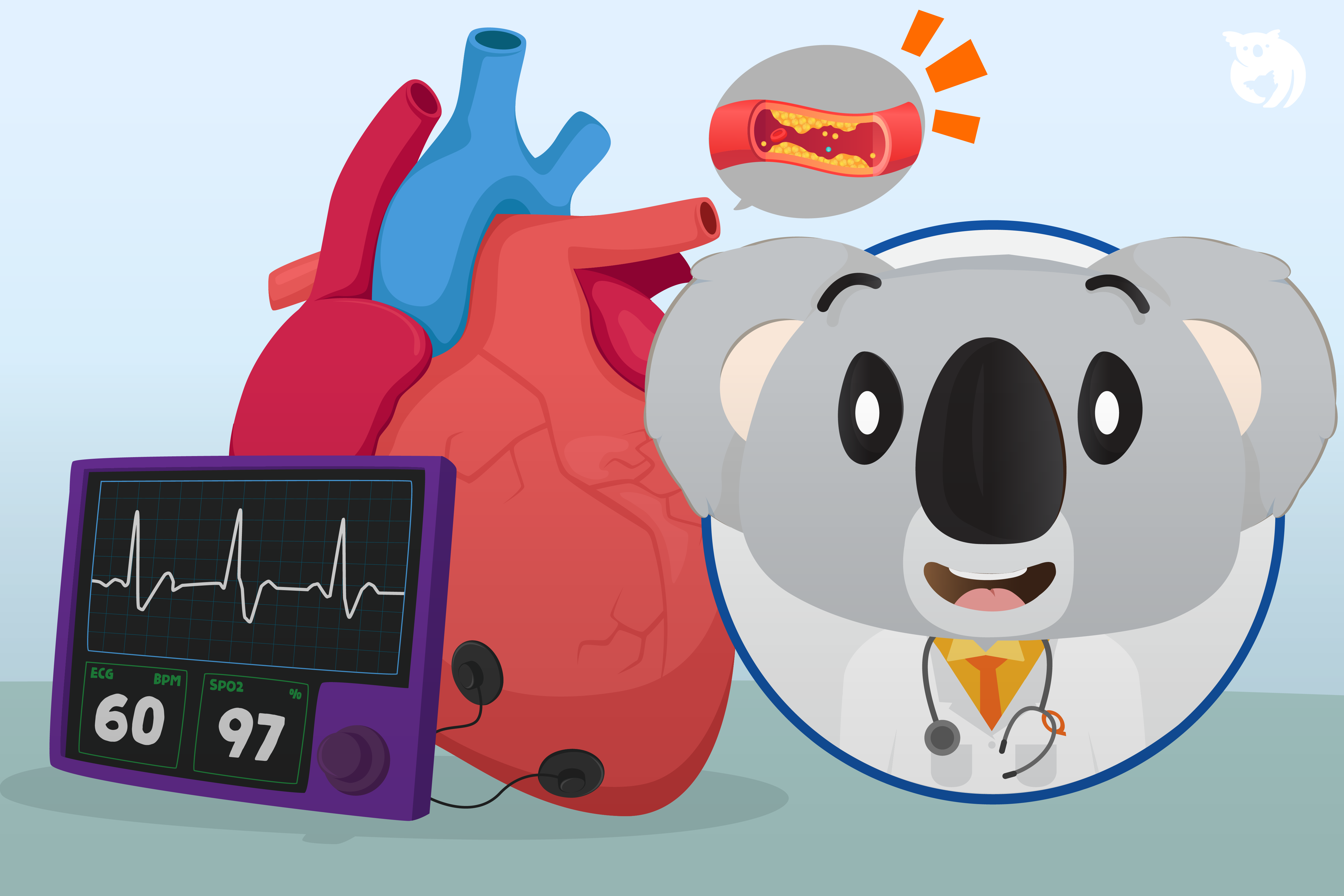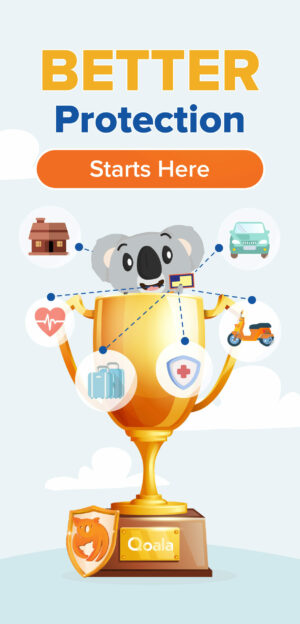High cholesterol can affect anyone, regardless of age. If you have high cholesterol levels, there’s no need to panic because this issue can be managed, and your cholesterol levels can return to normal. High cholesterol is linked to the risk of serious cardiovascular diseases, like heart disease and stroke. Additionally, it’s also associated with diabetes and high blood pressure. According to the World Health Organization (WHO), high cholesterol has resulted in roughly 2.6 million deaths worldwide.
What is Cholesterol? Is it a Health Risk for You?
It’s possible that you’ve heard about cholesterol, but you may not fully understand what it means. Essentially, cholesterol is a type of fat that is synthesized by your liver, body cells, and blood, and it plays a crucial role in maintaining your overall health by enabling your body to function properly.
Cholesterol is responsible for creating cell membranes, bile, certain hormones, and vitamin D. Your body is capable of producing its own cholesterol, and it also gets it from animal-based food sources. In general, there are two categories of cholesterol that exist within your body:
High Density Lipoprotein (HDL) or “Good” Cholesterol
Cholesterol that has high levels of HDL is very beneficial for your health. It transports cholesterol in your blood back to the liver where it is processed and then eliminated from your body.
Low Density Lipoprotein (LDL) or “Bad” Cholesterol
On the other hand, cholesterol that has high levels of LDL can be harmful to your health. It can deposit cholesterol on the walls of your blood vessels, block arteries, and increase the risk of heart attack or stroke.
The Danger of High Cholesterol: What Actions Can You Take?
Having high cholesterol levels means that there is too much cholesterol in your body, exceeding the normal range, and this is very dangerous to your health. Without undergoing a cholesterol level check, an individual may not realize they have high cholesterol because the symptoms of high cholesterol are usually not detectable from the early stages.
Having high cholesterol can lead to the formation of fatty deposits known as plaque in your blood vessels. This in turn affects the sufficient flow of blood through your arteries. Sometimes, the deposits can suddenly rupture and form a clot that leads to a heart attack or stroke.
Cholesterol Reading Table
You may be wondering how to find out your cholesterol level. Below is a table of cholesterol readings in mg/dL and three categories for your reference:
| Level | Reading Level (mg/dL) |
|---|---|
| Good | 170 and below |
| Moderate | 170-199 |
| High | 200 and above |
Causes of High Cholesterol
There are various factors that can cause your cholesterol to be at a high level. Cholesterol levels depend on several factors such as lifestyle, dietary intake, and so on. The following are the causes of high cholesterol levels:
- Unbalanced diet;
- Obesity;
- Smoking;
- Family history;
- Medications that have high levels of LDL.
The Effects of High Cholesterol in the Body
If cholesterol levels remain high, you are likely to experience the following health risks:
- Stroke and heart disease;
- Formation of gallstones;
- Numbness in the legs;
- Alzheimer’s disease.

7 Signs of High Cholesterol to Watch Out For
Individuals with high cholesterol levels should consult a doctor immediately. The treatment options usually depend on the level of cholesterol or whether they have other risk factors for heart attacks or strokes. The following are some signs that your cholesterol may be at a high level:
1. Easily Fatigued
Feeling tired or drowsy even without doing any strenuous activity can be a sign of high cholesterol. This is due to blocked blood vessels that should deliver oxygen to the brain. When blood flow is blocked, it affects the body, causing fatigue and tiredness.
2. Jaw Pain
Jaw pain can also be a major sign that you have high cholesterol. According to the American Heart Association, jaw pain is one of the symptoms of a heart attack that may occur due to high cholesterol levels.
3. Chest Pain
When cholesterol levels in the body increase, it causes the accumulation of fat in the arteries. Plaques from the fat then block the blood vessels and cause chest pain. Individuals with high cholesterol levels tend to feel pain in the chest area.
4. Neck Pain
Neck pain can occur due to many factors such as mental health (stress) or fatigue. However, did you know that high cholesterol in the body is also a factor in neck pain? The accumulation of plaques in the blood vessels in the neck will block the blood flow from the neck to the brain, causing pain in this area.
5. Leg Pain
Leg pain can also be a sign of high cholesterol in the body. The formation of plaques in the blood vessels in the legs can cause pain in the legs.
6. Xanthoma
Xanthoma can occur in individuals with high levels of cholesterol and triglycerides. If you notice lumps that are not painful but sometimes itchy, yellow or orange in color, get a blood test immediately to determine your cholesterol levels. It is highly likely that the lump is a part of the symptoms of high cholesterol that you are experiencing.
7. Numbness in the Legs
Numbness in the legs is also a sign of high cholesterol in the body. The accumulation of fatty plaques causes blood flow to the body tissue to be blocked. The build-up of plaques in the leg area causes the legs to feel heavy, painful, and even feel like they are burning.
If you are experiencing these symptoms, it is recommended that you see a doctor to get a better explanation. If you are experiencing such a situation, it is recommended that you consult a doctor to get further explanation.
5 Ways to Lower Your Cholesterol that You Can Practice
Taking medication can help reduce the cholesterol levels in your body. Additionally, you can also change your lifestyle to ensure that your cholesterol levels return to a healthy level.
1. Lose Weight
Excess weight is often associated with high cholesterol problems. Losing weight can lower your cholesterol levels because it can reduce the amount of fat in your body.
You can start taking small steps by making changes such as consuming low-calorie foods, reducing intake of sweet foods and drinks, controlling the quantity of food you eat, and so on. Also, reduce the intake of high cholesterol foods such as meat, eggs, dairy products, and processed foods.
Individuals who lose at least 10 pounds or 4.5 kg are enough to lower their cholesterol levels. A reduction of at least 5% of their body weight can lower LDL levels and total cholesterol in the body.
2. Quit Smoking
Smoking can affect your cholesterol levels in the body. You will become healthier if you quit smoking, and it will help lower your cholesterol levels.
- Within 20 minutes of quitting smoking, your blood pressure and heart rate improve;
- Within three months of quitting smoking, your blood circulation and lung function start to improve;
- Within a year of quitting smoking, your risk of heart disease is reduced by half compared to if you continue smoking.
3. Exercise and Active Lifestyle
An active lifestyle can also help lower your cholesterol levels. Exercise at home, for example, can help increase HDL, which is good cholesterol. Depending on your doctor’s advice, do light exercise for at least 30 minutes at least five times a week or more challenging aerobic activities for 20 minutes at least three times a week. Consider activities such as:
- Brisk walking;
- Cycling;
- Aerobics.
4. Dietary Changes
Making some changes to your diet can also help lower cholesterol and at the same time improve heart health. How to lower cholesterol with a diet? Follow the steps below:
Avoid Trans Fat Foods
Trans fats will increase overall cholesterol levels. Avoid foods such as margarine, french fries, and most snacks as these foods have high trans fatty acids.
Reduce Saturated Fat Intake
Saturated fats are highest from animals and animal-based foods such as butter, full cream milk, cheese, mayonnaise, meat fat, and so on. Overconsumption will increase your cholesterol levels. Consuming saturated fats moderately can reduce LDL or bad cholesterol levels.
Increase Fiber Intake, Soluble Fiber
Soluble fiber can reduce cholesterol absorption in your bloodstream. Soluble fiber can be found in foods such as oats, beans, and fruits such as apples and pears.
5. Take Medication, Supplements If Necessary
If your doctor recommends medication or supplements to help lower your cholesterol, take them as prescribed while adopting a new, more active lifestyle. Lifestyle changes can help you maintain a low-dose medication intake.
A healthy diet and physical activity can help many people achieve healthy cholesterol levels, but some patients may need medication to lower their cholesterol levels.

Take Immediate Action and Fix Your Cholesterol Reading
Knowing your cholesterol status can help you become more aware of your health status. To ensure that your cholesterol levels are within normal range, it is recommended to have your cholesterol levels checked regularly. For individuals aged 20 years and above, it is advised to have your cholesterol levels checked at least once every five years. However, if you are at high risk, you should have more frequent check-ups.
We hope that this article can help you understand more about the topic of cholesterol. You need to be aware of your health status to avoid the risk of diseases that may be life-threatening.
In addition, if you want to get the best health insurance, visit the Qoala website for more information. Qoala provides a range of medical and health insurance products from some of the best and most popular insurance companies in Malaysia with easy, fast, and secure processes. Additionally, you can also get car insurance, motorcycle insurance, and home insurance at Qoala!

 EN
EN
 MY
MY








